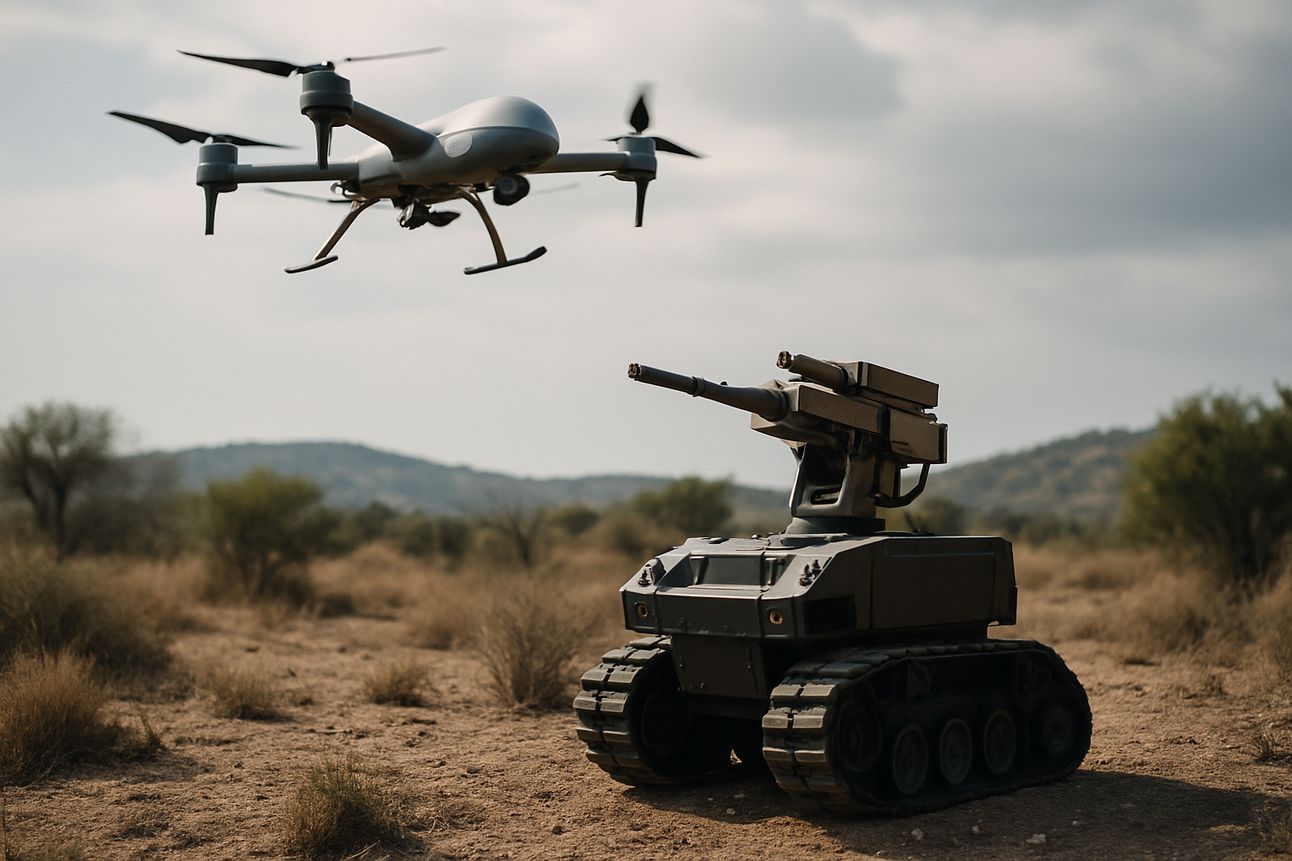- XcessAI
- Posts
- WAR by the LAWS
WAR by the LAWS
Lethal Autonomous Weapons Systems - Redefining the Modern Battlefield and Beyond

Welcome Back to XcessAI
Hello AI explorers,
In this edition, we explore one of the most controversial — yet underdiscussed — applications of AI: Lethal Autonomous Weapons Systems, or LAWS.
These aren’t concepts from science fiction. They’re real, being developed and tested now, and they add a new dimension in strategic thoughts, not only for governments and militaries, but for industries, executives, and regulators around the world.
Let’s take a deeper look at what’s happening.
What Are LAWS?
Lethal Autonomous Weapons Systems are machines capable of selecting and engaging targets without direct human control. They integrate:
Sensors and computer vision to detect and track objects
Decision-making algorithms to classify targets
Kinetic or cyber weapons to carry out actions — from physical strikes to electronic disruption
Unlike traditional weapons operated remotely (e.g., drones), LAWS can act independently once activated.
Why Now?
Several forces have converged to make LAWS viable:
AI advancement: Real-time object recognition, motion prediction, and decision modelling
Hardware miniaturization: Sensors, GPUs, and batteries are now compact enough for agile deployment
Military interest: Governments are actively funding programs aimed at increasing battlefield speed and precision
Software-defined warfare: Nations are experimenting with autonomy in air, sea, and land vehicles
Public awareness of these systems spiked after viral videos like Slaughterbots, which highlighted their theoretical dangers. But progress has continued.
Where This Is Already Happening
Although many details remain classified, reports confirm that LAWS have been deployed in testing or live environments:
United States: The Pentagon’s Replicator program aims to deploy thousands of autonomous systems across military branches
Russia and China: Both have invested heavily in autonomous ground vehicles and aerial platforms
Libya: UN reports suggest autonomous drones may have engaged targets independently
Israel: AI-assisted systems have been used for surveillance and precision targeting
This isn’t theoretical. It’s operational.
What Are the Risks?
The concerns around LAWS are significant and widely acknowledged:
Accountability gaps: Who is responsible if a machine makes the wrong decision?
Proliferation: The technology is becoming more accessible, even to non-state actors
Escalation risk: Autonomous systems reacting to each other could spiral into conflict faster than humans can intervene
Target ambiguity: Even sophisticated systems may misclassify civilians or non-combatants
Potential Benefits: Some experts point to potential advantages — particularly in reducing human casualties. LAWS could be deployed in environments too dangerous for personnel, such as urban combat zones or minefields. Their precision, when properly constrained, may reduce unintended harm compared to emotionally driven or fatigued human combatants.
What It Means for Business
While LAWS are a defence issue on the surface, their ripple effects touch multiple sectors:
Supply chains: Chipmakers, robotics suppliers, and drone manufacturers are already indirectly involved in military AI procurement
Regulation: International treaties and domestic laws may affect companies building dual-use AI technologies
Security: Autonomous systems could be used beyond the battlefield — in critical infrastructure, border control, and cybersecurity
Reputation: Businesses face increasing scrutiny over how their technologies are used post-sale
Much like the early internet or biotech, AI’s military potential demands risk assessments from non-military actors.
What’s Being Done?
In response, institutions are taking early steps:
United Nations: Ongoing discussions around international norms and potential treaties on LAWS use
International policy bodies: Entities like the EU, NATO, and others are exploring frameworks to guide the use of AI in military contexts
Corporate governance: Some tech companies have drafted internal AI usage guidelines, banning offensive military applications
Academic research: Groups are working on interpretability and control mechanisms to keep autonomous systems within ethical bounds
At present, however, there is no global legal framework governing the use of LAWS — only voluntary principles.
Final Thoughts
Whether used in kinetic combat, cyber defence, or automated surveillance, the underlying issue is the same: machines capable of making lethal decisions independently of human input.
This is not solely a national security issue. It marks an inflection point in AI governance that could reshape how technology is developed, sold, and used across sectors.
The question is no longer whether this is technically feasible — it is. The challenge is how to manage, constrain, and account for it responsibly before widespread adoption.
Understanding LAWS today may prove as important for business leaders as understanding cybersecurity was a decade ago.
Until next time,
Stay aware. Stay informed.
And keep exploring the frontier of AI.
Fabio Lopes
XcessAI
P.S.: Sharing is caring - pass this knowledge on to a friend or colleague. Let’s build a community of AI aficionados at www.xcessai.com.
Don’t forget to check out our news section on the website, where you can stay up-to-date with the latest AI developments from selected reputable sources!
Read our previous episodes online!
Reply